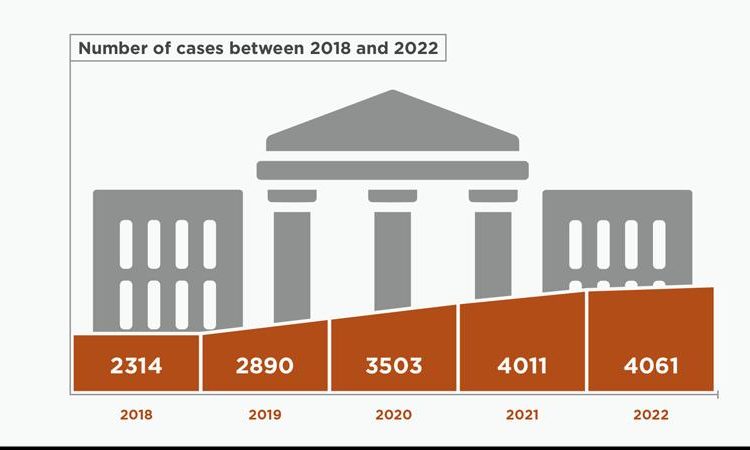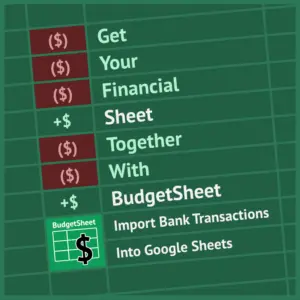We’re seeing many trends this year with artisans considering building their own websites. I’m writing a series this year for Handmade Seller to share an often overlooked area of website technology- accessibility. This is a topic that many people don’t fully understand. This series will help you understand what’s behind the topic of accessibility, what different platforms have to offer to meet accessibility guidelines, and how to help you make the decisions that make the most sense for your business. Let’s dive in this month going over the background of accessibility and accessibility requirements.

Legal Requirements & Ramifications for Website Accessibility
Back in 2016, a blind man sued Domino’s Pizza claiming that their website and mobile app were not accessible to people with disabilities using assistive technology. The U.S. Court of Appeals for the 9th Circuit agreed with the plaintiff, arguing under the ADA that customers should be able to access “the services of a public accommodation.” However, Domino’s Pizza disagreed stating ADA should not apply to the Internet.
This article isn’t to debate whether ADA accommodations should or should not be applicable to websites… Rather, we want to keep you informed on expectations and best practices so you can make your own decision as a small business!
What is digital accessibility?
Digital accessibility is the overarching term for online accommodations which assist users browsing the Internet. One key takeaway is that someone doesn’t need to be categorized as “disabled” in order to want or need accommodations. Consider the following populations:
- People with hearing impairments won’t be able to listen to your videos. Do you have Closed Captioning enabled?
- People with visual impairments may be using assistive technology to “read” the website to them, rather than them being able to see and click independently.
- People with color blindness may not be able to distinguish text colors from background colors.
- Neudiverse users (such as those with autism or dyslexia) may have more difficulty browsing your website if the text is too small, or if there is too much movement.
- Users whose native or primary language is not English might need a more simplistic language.
- Our aging population who rely on assistive technology, like being able to zoom in on a website to read text that’s otherwise too tiny.
And, these accommodations all require different assistive technology:
- Screen Readers navigate based on semantic structure
- Refreshable Braille Displays use screen reader technology to provider a braille cell display for users to read with and that refreshes as the user navigates through sections.
- A Hands-Free Mouse uses alternative devices for mouse functions, such as head movement recognition equipment and Eye Gaze Edge System technology which uses a camera to track eye movement to navigate the screen.
- Dictation Software utilizes voice command recognition software.
- Screen Magnifiers enlarge text and images.
How severe and frequent are lawsuits?
The short answer is pretty dang frequent!
UsableNET authored a mid-year report estimating a total of 4,220 lawsuits relating to digital accessibility (including websites, mobile and video) by the end of 2023.* No single business is exempt, as the majority of claims are against businesses that have less than 25 million in annual revenue.
Unfortunately, this still includes websites that use an accessibility widget or overlay on their website. (Pro tip: Just don’t use them! More details coming soon…)
What are the basic requirements to meet accessibility guidelines?
Here’s where things get tricky: Several different guidelines have been adapted to cover online accessibility, but there is no one “true” standard… Yet. Both the United States as well as individual states are each working independently to identify a standard.
Americans with Disabilities Act
The ADA was enacted in 1990, prohibiting discrimination based on disability in places of public accommodation. While it did not specifically mention the Internet, private lawsuits frequently cite the ADA that online spaces are places of public accommodation.
Web Content Accessibility Guidelines (WCAG)
The WCAG are part of a series of web accessibility guidelines published by the Web Accessibility Initiative of the World Wide Web Consortium, the main international standards organization for the Internet. The WCAG AA 2.1 guidelines are considered by most to be the primary standard for website accessibility.

The Online Accessibility Act (Pending)
The Online Accessibility Act was recently re-introduced in Congress in 2023, with the hope of continuing review in 2024. It would cover both websites and mobile apps, and designate the WCAG 2.0 AA as the standard for accessibility.
The Websites and Software Applications Accessibility Act (Pending)
This bill was also recently proposed and would cite the ADA that having an inaccessible website (or app) counts as discrimination against people with disabilities. It would also enforce an accessibility standard, which is still to be determined.
So, what is a small business to do?
There are a handful of steps any business can take to make their website more accessible to everyone including:
- Follow WCAG 2.1 AA standards
- Scan your website for any potential issues or errors
- Include an accessibility statement on your website
The best place to start is to identify the issues which are currently present on your website. Once you have the results, you can begin fixing them one-by-one to meet the WCAG standards.
Online Tools to Test Accessibility
It’s important to note that some of the following scanners/checkers are built by software companies trying to sell accessibility overlays or widgets. Their tools are helpful, but still be mindful that it’s a part of their marketing strategy!
- Colour Contrast Checker – Check to see if your color combinations meet AA or AAA standards
- UsableNET website scanner
- Accessibility Checker
- accessiScan by accesiBe
- WAVE Evaluation Tools
We will continue our accessibility series through 2024!
Want to read the second part of the series? This article goes into a lot more detail on WCAG 2.1 and 2.2 AA Standards. Keep learning more!
Interested in a subscription to the magazine?
Interested in a digital or print subscription to our quarterly magazine? Or are you interested in reading back issues of the magazine?








